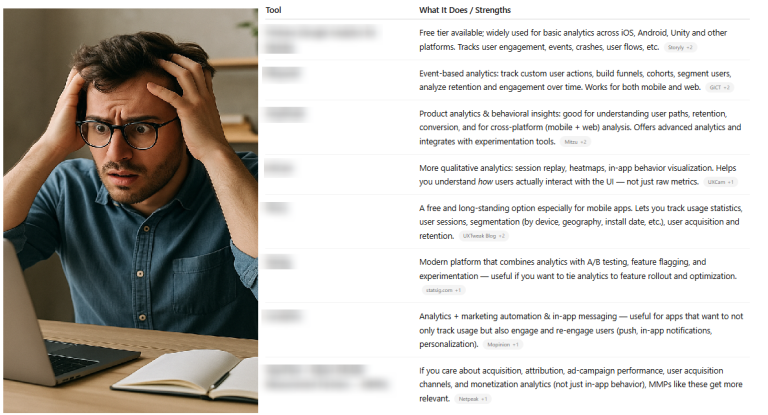
No company (or country) is too big to fail.
👉 Blockbuster
👉 Borders
👉 Toys “R” Us
👉 RadioShack
👉 Circuit City
👉 Palm
👉 Nokia
👉 MySpace
👉 Sears
👉 Polaroid
👉 Lehman Brothers
👉 Enron
👉 MTV
(I assume Jaguar, Chrysler, and Buick will join that list shortly).
Let these companies (and thousands like them) serve as a reminder to all.
You can be a market leader, a household name, have billions of dollars in capital, a roster of smart and talented people…
…and still fail.
Poor decision making, failure to act quickly, failure to innovate and adapt, taking shortcuts, sacrificing long-term vision for short-term gains, arrogance, becoming too political…
Past success doesn’t guarantee future success.
What are buying triggers?
A buying trigger is an event, condition, or circumstance that prompts a potential customer to recognize a need or desire, making them more inclined to consider or make a purchase. Buying triggers can be external (like an industry change or a life event) or internal (like a shift in priorities or a realization of a problem).
Examples of Buying Triggers:
External Triggers:
- A new job, promotion, or relocation
- Seasonal changes or holidays
- A company experiencing rapid growth or downsizing
- Economic shifts or new regulations
Internal Triggers:
- Dissatisfaction with a current product or service
- Awareness of a need they weren’t previously considering
- A desire for self-improvement or a lifestyle change
Why Buying Triggers Matter:
Understanding buying triggers helps businesses position their products or services at the right time and place, crafting messages that resonate with customers’ current needs or desires. This leads to more effective targeting, messaging, and sales conversions.
What are buying triggers?
1. Identify Relevant Triggers for Your Audience
- Research Your Customers: Use surveys, interviews, or customer data to uncover common life events, pain points, or behaviors that lead them to buy.
- Segment by Trigger Type: Group your audience based on shared buying triggers, such as new parents, job changers, or seasonal shoppers.
2. Personalize Messaging Around Triggers
- Speak to Their Moment: Tailor marketing messages to directly address the emotions, challenges, or desires associated with the buying trigger.
- Example: A moving company could target “relocation stress” with messaging like, “Moving to a new home? Let us make it easy!”
- Show Empathy: Position your product as the solution to the problem the trigger creates.
- Example: Fitness brands can target “New Year’s Resolutions” with messaging like, “Start strong this year with equipment built for your goals.”
3. Time Your Campaigns Strategically
- Use Predictive Analytics: Leverage data to predict when triggers might occur (e.g., tax season, graduation, weddings).
- Run Trigger-Based Campaigns:
- Seasonal: Run promotions tied to events like back-to-school or summer vacations.
- Life Events: Target ads to individuals celebrating milestones like engagements, new jobs, or retirements.
4. Leverage Targeted Advertising
- Use Behavioral Data: Monitor online behavior to detect when someone might be experiencing a trigger (e.g., searching for moving tips, wedding planners).
- Create Trigger-Based Audiences: Build campaigns for specific life events using platforms like Facebook Ads or Google Ads, which allow targeting by interests, behaviors, and demographics.
5. Align Product Features with Triggers
- Highlight Immediate Value: Emphasize features or benefits that align with the trigger.
- Example: A home security system marketed to new homeowners with the message, “Protect what matters from day one.”
- Bundle or Offer Discounts: Create bundles or limited-time offers for customers experiencing a trigger.
6. Create Content That Educates and Inspires
- Content Marketing: Develop blogs, videos, or guides that address common triggers.
- Example: A skincare brand could publish “How to Prepare Your Skin for Winter” to capitalize on seasonal triggers.
- Social Proof: Share testimonials or case studies of customers in similar trigger situations.
7. Nurture Relationships Around Triggers
- Lifecycle Marketing: Use email and SMS campaigns to stay relevant during trigger moments (e.g., anniversary reminders for subscription renewals).
- Retargeting: Follow up with customers showing signs of a buying trigger, offering gentle nudges to convert.

Continue Reading: What Are Category Entry Points (CEP)?
- Related post: The T-Shirt Theory of Branding
- Related post: The Power of Branding: John’s Family Premium Organic Garlic
- Related post: Why You Don’t Want to Run a Business that Relies Solely on Ads


Continue reading: What’s the ROI of a Billboard








